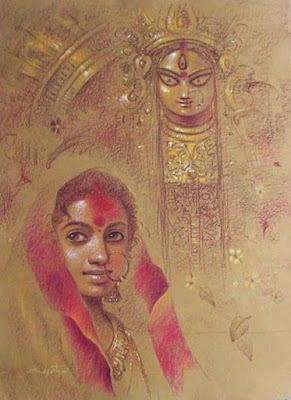Since the inception of commercial art, the
debates over the inter-mingling margin and roles of fashion with that of art are
intense. Accept it or not, Art, design and fashion, all these terms confused us
whenever we were to pick definitions. No matter what you try, which logic you
imply, there’s always a chance of hitting some exception on your way. But we
are not talking about how big of intensified this debate could be, we are
focussing on the exception part.
Yes! Here’s a list of top 9 fashion/items that
are considered Art now-a-days and you can’t deny their position. The
Metropolitan Museum of Art curated these wearable garments and now the world
spectre them as masterpieces.
1. . Design House: House of Dior (French, founded 1947)
Designer: Christian Dior
(French,
Granville 1905–1957 Montecatini)
Date: spring/summer 1947
Culture: French
Medium: silk
 |
| Christian Dior |
2. Designer: Elsa Schiaparelli (Italian, 1890–1973)
Design House: House of
Schiaparelli (French, founded 1928)
Date: fall 1938
Culture: French
Medium: synthetic
 |
| Elsa Schiaparelli |
3. Designer: Paul
Poiret (French, Paris
1879–1944 Paris)
Date: 1922
Culture: French
Medium: metallic, silk
 |
| Paul Poiret |
4. Design House: Yves Saint Laurent, Paris (French, founded 1961)
Designer: Yves
Saint Laurent (French (born Algeria) Oran 1936–2008 Paris)
Date: fall/winter 1965–66
Culture: French
Medium: silk, wool
 |
| Yves Saint Laurent |
5. Design House: House of Balenciaga (French, founded 1937)
Designer: Cristobal
Balenciaga (Spanish, Guetaria, San Sebastian 1895–1972 Javea)
Date: fall/winter 1965–66
Culture: French
Medium: silk
 |
| Cristobal Balenciaga |
6. Design House: Attributed
to House of Chanel (French, founded 1913)
Designer: Attributed to Gabrielle "Coco" Chanel
(French, Saumur 1883–1971 Paris)
Date: 1926–27
Culture: French
Medium: silk, metallic thread, sequins.
 |
| Gabrielle "Coco" Chanel |
7. . Design House: Fortuny (Italian, founded 1906)
Designer: Mariano
Fortuny (Spanish, Granada 1871–1949 Venice)
Date: 1925–49
Culture: Italian
Medium: Silk, glass
 |
| Mariano Fortuny |
8.Design House: House of
Worth (French, 1858–1956)
Date: 1925
Culture: French
Medium: silk, beads, metal thread
 |
| Charles F. Worth |
9.Designer: Madeleine
Vionnet (French, Chilleurs-aux-Bois 1876–1975 Paris)
Date: spring/summer 1938
Culture: French
Medium: rayon
 |
| Madeleine Vionnet |
(The following content is with reference of The Metropolitan Museum of Art. all the images and information are thereby the copyright of The museum. for more art reference you can visit
http://www.metmuseum.org/)



































